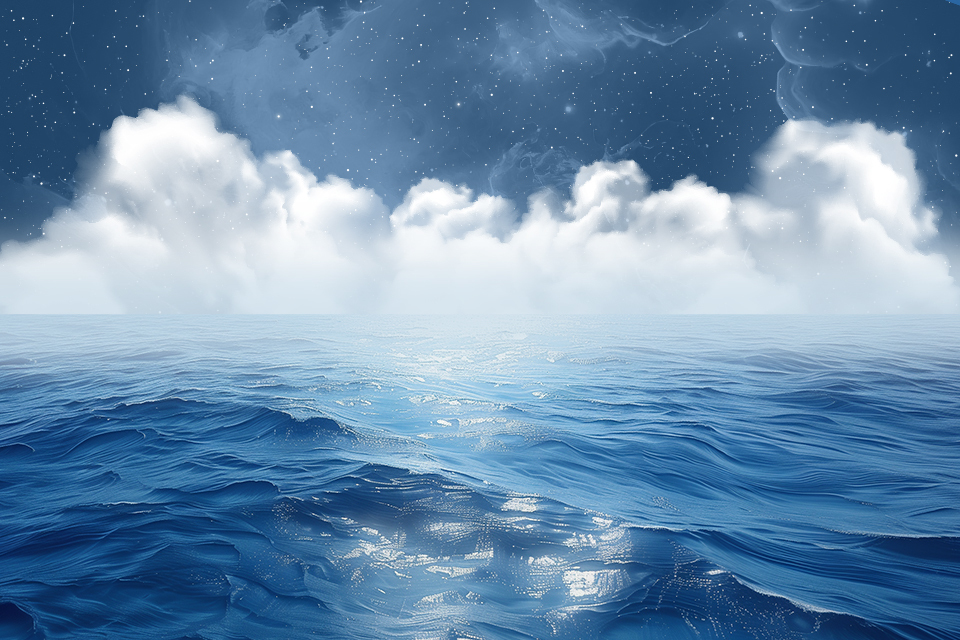If you look at the Earth from the outer space, its main feature as a planet in the solar system is the presence of oceans that cover more than 70% of its surface. Today, it is the only celestial body for which it is absolutely certain that water is present on its surface in a liquid state and in such a huge amount. So we decided to remind you of some important things about the largest bodies of water in our world.

1. How many oceans are there on Earth?
The question of how many oceans there are on Earth is more about traditions than about any real physical parameters. If astronomers from some other civilization were to observe our planet, they would reasonably note that we have one ocean, which is part of a larger system, the planetary hydrosphere.
However, due to traditions, people divide this ocean into several parts. The most popular option is that there are four oceans: Atlantic, Pacific, Indian, and Arctic.
However, there is also a classification with as many as five oceans. In addition to the four oceans mentioned above, there is also the Southern Ocean, bounded by the extremes of South America, Africa, and Australia, as well as the coast of Antarctica. The Arctic Ocean can also be considered part of the Atlantic Ocean, and then it turns out that there are only three of them.
2. What is the greatest depth of the ocean?
The deepest point in the world’s oceans is the Challenger Trench, located in the Mariana Trench, with a depth of 11,034 meters. It is also the deepest trench in the Pacific Ocean. However, three or four others have their own deepest places.
For the Atlantic Ocean, this place is the Puerto Rico Trench, near the Caribbean Sea. The depth here reaches 8742 meters. For the Indian Ocean, it is the Zond Trench with a depth of up to 7729 meters, and for the Arctic Ocean, the Greenland Sea with a depth of 5527 meters. If we single out the Southern Ocean, it reaches its greatest depth in the South Sandwich Trench – 8264 meters.
3. What else do people not know about the ocean?
Despite the fact that people have been exploring the oceans for thousands of years, it still remains the most unexplored part of our planet. For example, it was only in the second half of the nineteenth century that the existence of the largest mountain system on Earth, the mid-oceanic ridges, became known where lithospheric plates meet underwater.
Its full extent was only realized in the mid-20th century. Even then, the bottom of the Earth’s oceans remains less explored than the surface of the Moon. People have only descended to some of the deepest points and to the seabed. The rest has been explored exclusively with the help of echo sounders.
4. How does the ocean affect the Earth’s climate?
The ocean is the largest factor that determines the climate of our planet. A giant reservoir of water receives, accumulates and transfers the energy of the Sun to the surrounding space. And because it has currents, it also transports it from one point of the surface to another.
At the same time, the thermal energy of the ocean can also be transferred to the atmosphere along with water evaporating from its surface. Cyclones and hurricanes form over the oceans, which then move onto land. The climate of coastal areas is determined by the presence of sea and ocean-related air currents.
Taken together, this system is extremely difficult to understand, and scientists are still figuring out how it works. However, it is already clear that the ocean can both slow down and amplify climate change caused by human activity.
5. How does sea level change?
All heights on Earth are determined relative to sea level. However, this level itself can vary quite a bit depending on which part of the ocean we are talking about, at what time of day and season of the year the measurement is made.
And yet, people are sure that sea level has been slowly rising in recent decades. During the nineteenth century alone, it rose by 17 cm, and studies show that this is only the beginning. By 2100, it could rise by 0.5 or even 2 meters. The reason for this is the melting of glaciers, which is accelerating due to global warming and the growing greenhouse effect.

